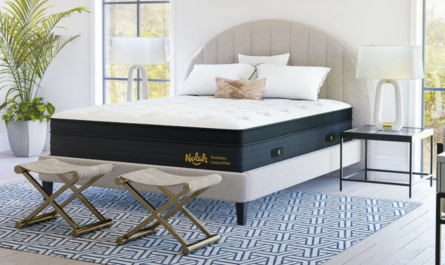A quick browse of Thuma.co and you might think its concept spawned from the early days of the pandemic — a time before we figured out our work-from-home systems and when the bed often doubled as a desk.
But founders Douglas Shumway and Reed Kamler were a little ahead of their time, having founded Thuma in 2016 to provide a simple and elegantly crafted platform bed for modern-day “indoor enthusiasts.”
From their marketing aesthetics, price points and product offerings, they are comparable to competitors like Tuft & Needle and Flloyd, but Thuma offers something different. They are selling the full bedroom set, which is decidedly against trend, a throwback to furniture stores from the ’80s and ’90s, but with modern aesthetics, a sustainability mission and a techy twist (likely informed by their Silicon Valley roots).
They have carved out a unique place in the bedroom category, niching down and speaking to one audience. To put it another way: They make buying the matching bedroom set cool.
Two barriers to entry
There are two basic barriers to entry when you arrive at Thuma’s site: one is aesthetic (modern, minimalist, bright white), and two, the customer must be comfortable making a big purchase like a mattress online.
These barriers are not a bad thing. Quite the opposite: Because these conditions are clear up front, Thuma wastes no time speaking to their primary audience. They’re nailing the category of the city-dweller who likes a clean, modern aesthetic and prioritizes the bedroom over other spaces.
Their target consumer appreciates the company’s commitment to sustainability and Japanese craftsmanship. (They are Greenguard Gold Certified and partnered with the organization One Tree Planted to plant a tree for each bed, headboard, nightstand and dresser sold.) This is for the buyer who has outgrown Ikea and wants something more elevated, but also values efficiency in their shopping experience and is fine purchasing online without trying out the product first.
Bed time versus “bedtime”
Thuma sells “bed time,” not to be confused with “bedtime,” which they define as ”the celebration of all the best times that happen on The Bed while you’re awake.”
Here, the brand takes the focus off sleep, the obvious selling point for a mattress and, counterintuitively, prioritizes awake time spent in the bedroom. This sets them aside from competitors and opens up potential ancillary product options.
If you’ve bought into the entire Thuma bedroom suite, you’re probably going to want the Thuma living room or kitchen in the future. This opens Thuma up with rooms for growth. From a branding and marketing perspective, they are set up for repeat customers.
On being a tech company that sells physical product
When the consumer’s first interaction with a product is through the website, their experience of navigating that site also has to, in some way, mirror the experience of actually touching and being around the physical product.
The first and easily explained way of doing that is through the brand aesthetics. The visual branding has to evoke a multisensory experience of using the product.
The second way of doing this is through good UX (user experience) design. Thuma does this well. The cleanliness of the product and the advertising aesthetics also match the UX of shopping on their website. It’s neat and twee and modern and easy to navigate.
They strike a balance between offering something new and something familiar.

 by
by 

